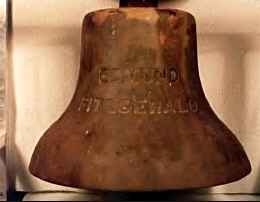GON
$100 Site Donor 2024
Interesting changes made after the sinking of the Edmond Fitzgerald. This information cut and pasted from Split Rock Lighthouse:
What Changed Because of the Fitz? With the sinking of the Edmund Fitzgerald, it became clear that even larger vessels could sink on Lake Superior. This tragic event led to several important changes in Lake Superior shipping:
1. Pre-November inspections of hatch and vent closures as well as lifesaving equipment became required by the Coast Guard.
2. Lake Superior navigational charts were improved and made more accurate with additional details.
3. To help locate ships in emergency and disastrous situations, all vessels were required to have Emergency Position Indicating Radio Beacons (EPIRB) on board.
4. The National Oceanic and Atmospheric Administration (NOAA) began to use a different system to predict wave height.
5. In 1977, the Coast Guard required ships 1,600 gross register tons or greater to use depth finders.
6. In 1980, vessels were required to have survival suits with attached strobe lights in the crew quarters and at regular workstations.
7. Also in 1980, the LORAN-C (Long Range Navigation) navigation system was implemented over all the Great Lakes. By 1990, GPS took its place.
8. The 1973 Load Line Regulation amendment was repealed. This action prevented vessels from being overloaded which meant ships could sit higher in the water.

What Changed Because of the Fitz? With the sinking of the Edmund Fitzgerald, it became clear that even larger vessels could sink on Lake Superior. This tragic event led to several important changes in Lake Superior shipping:
1. Pre-November inspections of hatch and vent closures as well as lifesaving equipment became required by the Coast Guard.
2. Lake Superior navigational charts were improved and made more accurate with additional details.
3. To help locate ships in emergency and disastrous situations, all vessels were required to have Emergency Position Indicating Radio Beacons (EPIRB) on board.
4. The National Oceanic and Atmospheric Administration (NOAA) began to use a different system to predict wave height.
5. In 1977, the Coast Guard required ships 1,600 gross register tons or greater to use depth finders.
6. In 1980, vessels were required to have survival suits with attached strobe lights in the crew quarters and at regular workstations.
7. Also in 1980, the LORAN-C (Long Range Navigation) navigation system was implemented over all the Great Lakes. By 1990, GPS took its place.
8. The 1973 Load Line Regulation amendment was repealed. This action prevented vessels from being overloaded which meant ships could sit higher in the water.



